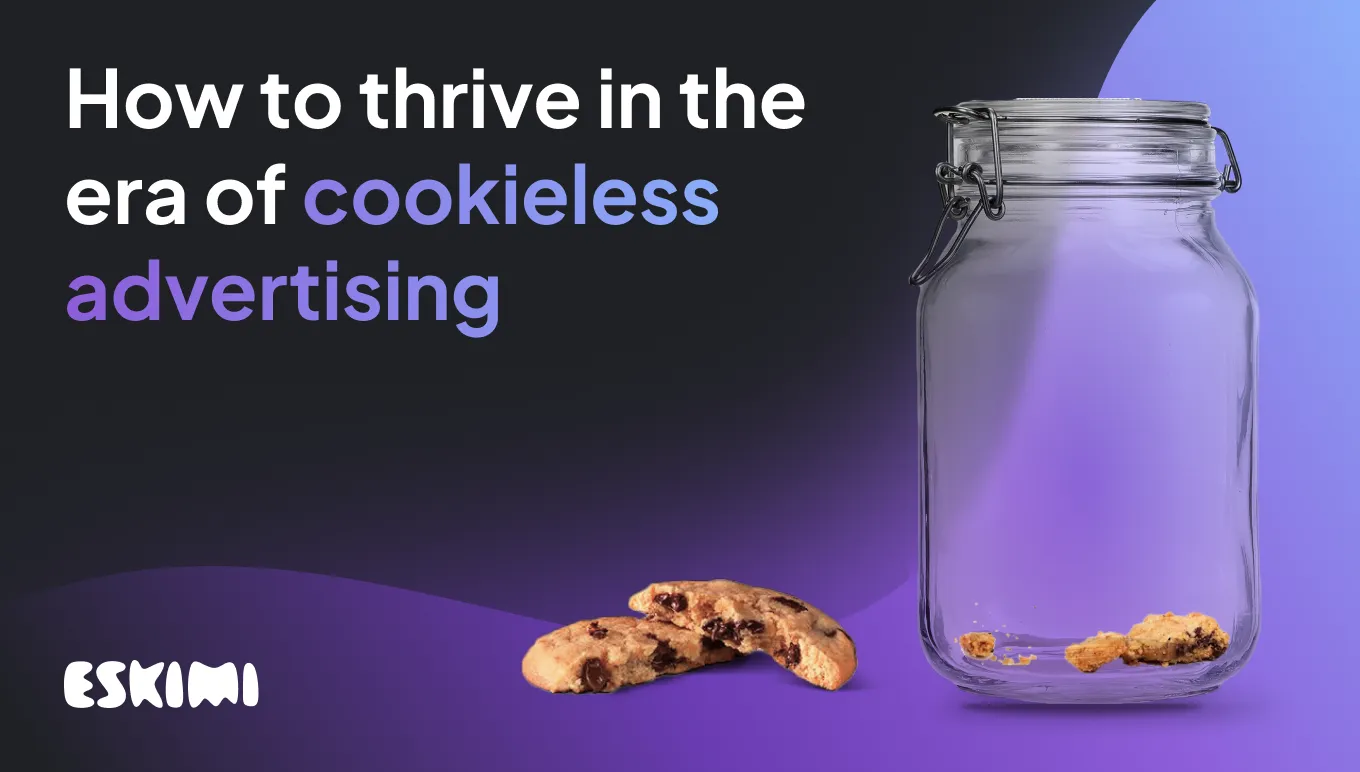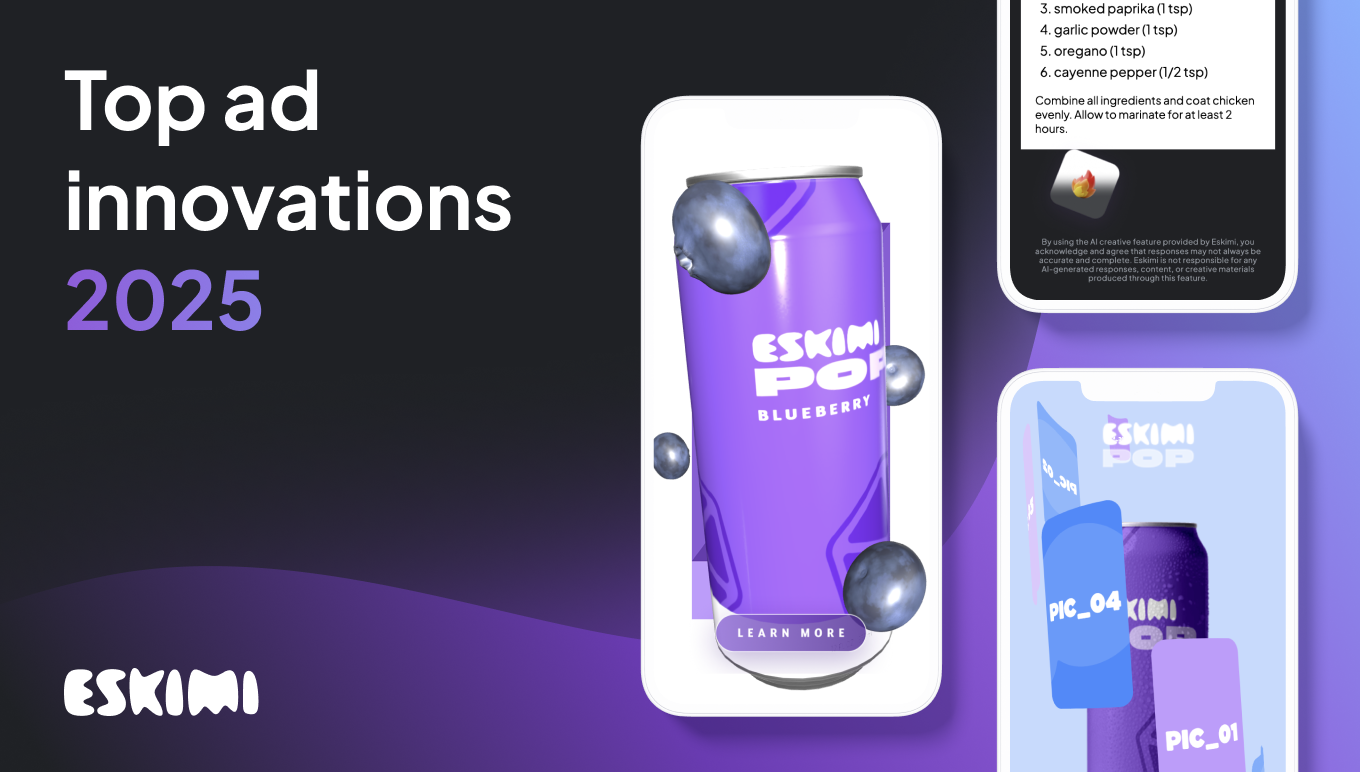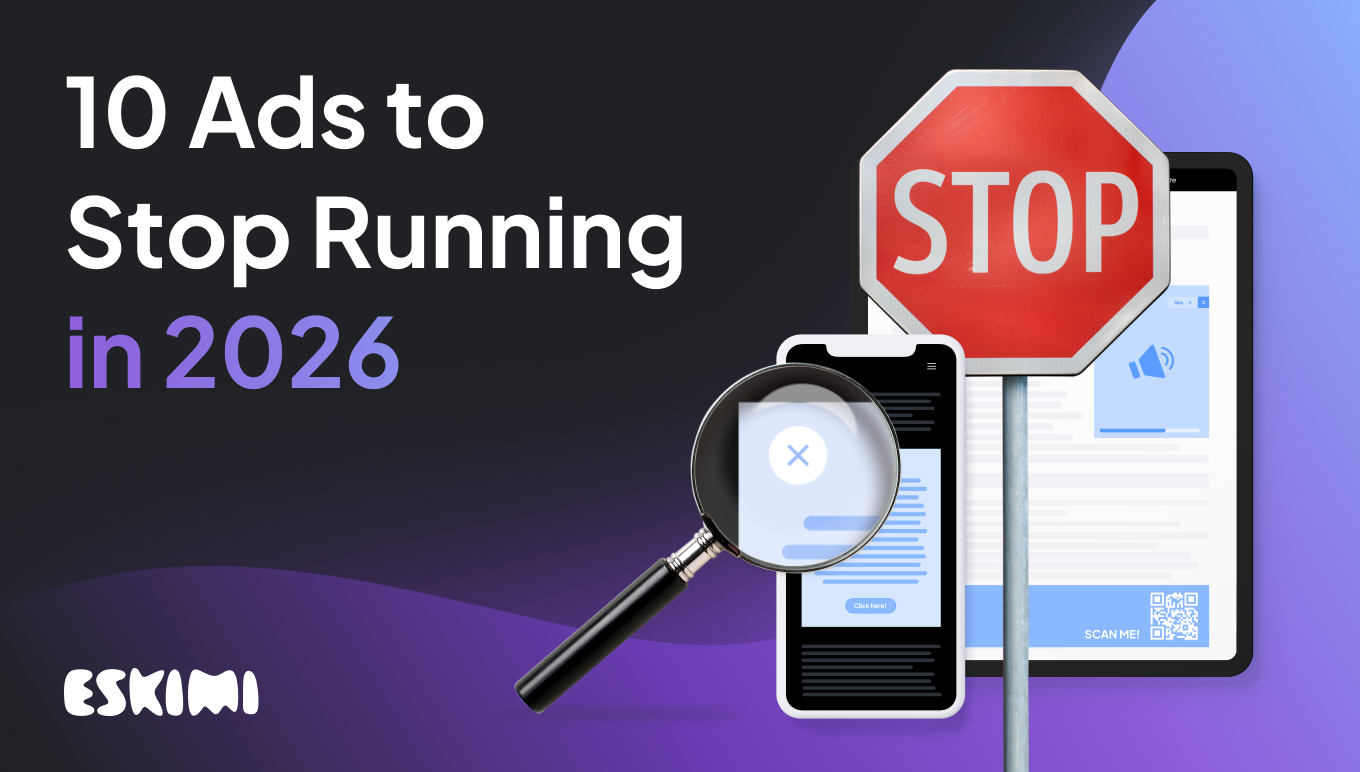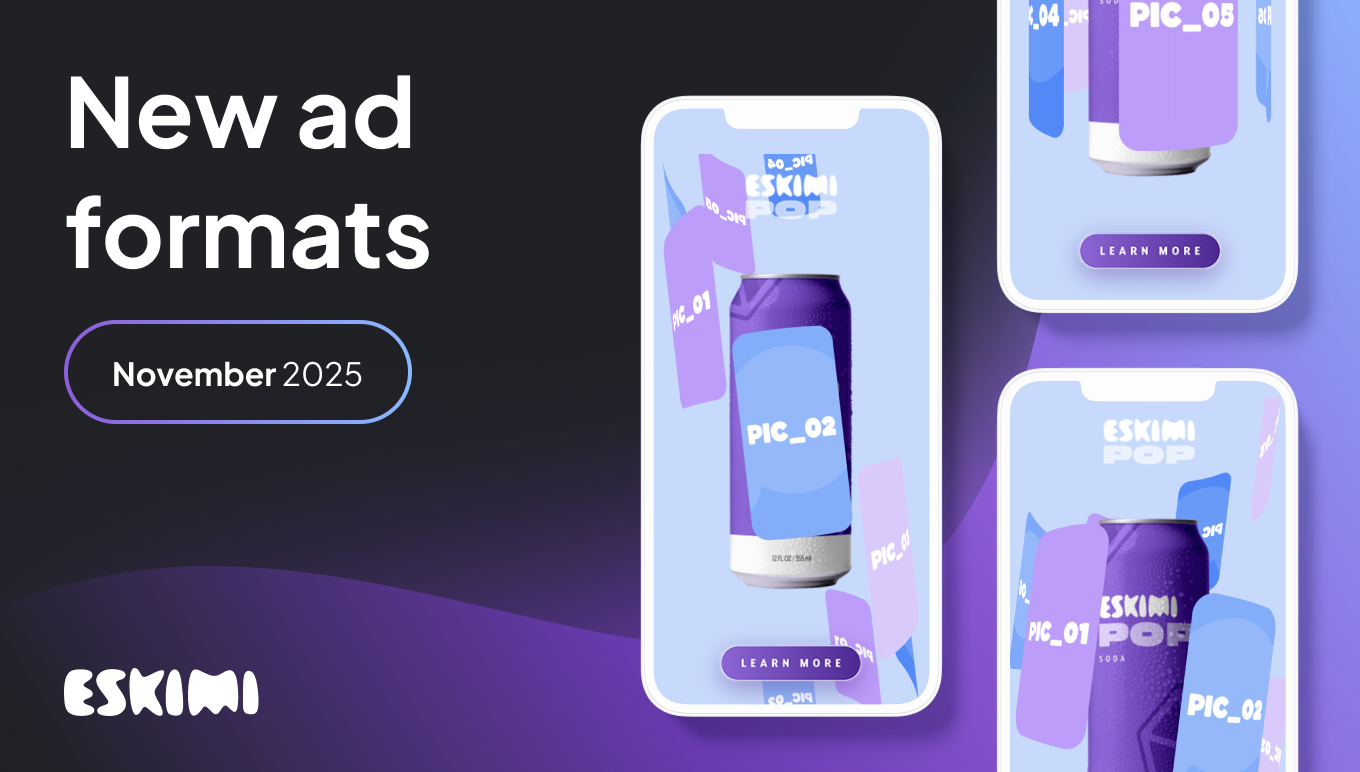Beyond the Cookie Jar: Thriving in a Cookieless Ad Ecosystem

It's the end of an era. For over two decades, cookies have been the backbone of the digital advertising industry, tracking user behaviors to help businesses target their ads more effectively. However, evolving regulations such as the GDPR in Europe, the CCPA in California, and increasing public awareness about data privacy have created a seismic shift.
- Regulatory changes: The aforementioned regulations have emphasized that user consent is mandatory for data collection. This change has impacted how cookies can be used for tracking and advertising.
- Public sentiment: Consumer advocacy for privacy has led to browser-level changes. For example, Google's decision to phase out third-party cookies in Chrome by 2023 has accelerated the demise of cookie-based tracking.
The result? The dawn of the cookieless advertising era.
What is cookieless advertising?
Cookieless advertising is essentially the next evolution in targeted advertising, designed to respect user privacy while still delivering advertisers the insights they need. It's a robust ecosystem that consists of various alternatives to traditional cookie-based methods:
- First-party data: Instead of relying on third-party cookies, businesses are looking inward, focusing more on first-party data collected directly from their audiences. This data is often more accurate and definitely more compliant with privacy laws.
- Contextual advertising: In the absence of user-specific data, ads are placed based on the content that the user is currently viewing. This ensures that the ads are relevant, even if they're not personalized to each individual user.
- Identity resolution platforms: These tools stitch together fragmented user data from multiple sources, allowing marketers to build a more holistic view of their target audience without infringing on privacy.
- Federated learning of cohorts (FLoC): Google’s FLoC is an example of how machine learning models analyze user behavior locally on the device, sharing only group-level insights with advertisers. Thus, individual privacy is maintained.
- Server-side tracking: Storing and processing user data on the server, as opposed to the client, offers another way to personalize user experiences without requiring third-party cookies.
Why cookieless advertising matters for businesses
Cookieless advertising isn't just a buzzword; it's an unavoidable adaptation. Here's why:
- Compliance and trust: Adopting cookieless solutions allows businesses to remain compliant with regulations and build trust among consumers, who are increasingly concerned about how their data is being used.
- Ad-blocking: Modern web users are savvy enough to employ ad-blockers or browse incognito. Cookieless strategies help to navigate these hurdles.
Moreover, cookieless advertising opens new doors for precision targeting. While cookies are used to deliver relevance, first-party data and machine-learning models are becoming increasingly proficient at identifying potential customers.
- Predictive analytics: By analyzing first-party data, AI and machine learning algorithms can predict future consumer behaviour, enabling more effective targeting without cookies.
- Sustainability: Unlike cookies, which were subject to deletion and could expire, server-side tracking and first-party data can offer a more permanent and reliable basis for your advertising strategies.
The traditional role of cookies in advertising
The role of cookies in the digital advertising ecosystem has been monumental, providing a foundation for capabilities ranging from user tracking to personalized advertising. Let's take a look at some key aspects.
What are HTTP cookies?
HTTP cookies are small pieces of data stored on a user's computer while they are browsing the web. These cookies facilitate multiple functions:
- Session management: Maintaining user state across web pages, such as login information.
- Personalization: Storing user preferences, like language or location.
- Tracking: Monitoring user behavior for analytics or advertising.
Understanding the basic functionalities of cookies allows advertisers to leverage their capabilities for multiple use-cases, primarily related to enhancing user experience and targeting efficacy.
Tracking user behavior: Retargeting, personalization, and attribution
When it comes to advertising, cookies have been invaluable in enabling three significant functionalities:
- Retargeting: By tracking what products or pages a user has viewed, cookies allow advertisers to "follow" the user with related ads as they browse different websites.
- Personalization: Cookies gather data to help display more relevant advertisements, based on user behavior and preferences.
- Attribution: Knowing how a user interacted with various touchpoints (like ads or landing pages) before making a purchase or converting helps in attributing the success to specific campaigns.
By combining these functionalities, advertisers can create more impactful, personalized campaigns that not only capture attention but also drive action.
Privacy concerns and regulatory action
As beneficial as cookies have been for advertisers, they have also raised significant privacy concerns:
- Data proliferation: The extensive gathering of data for ad targeting purposes can become invasive, storing more information about users than they may be aware of.
- Third-party risks: Third-party cookies, which are set by domains other than the one the user is visiting, have been particularly scrutinized for their potential to compromise user privacy.
- Lack of transparency: Users often have limited knowledge or control over how their data is being used and by whom.
Cookieless advertising timeline
Let's now track the evolution of cookies in advertising.

The transition to a cookieless world
The gradual move away from cookies has been triggered mainly by pivotal updates to popular web browsers, each taking a unique approach to addressing privacy concerns.
- Mozilla Firefox: Introduced Enhanced Tracking Protection, affecting third-party cookies.
- Microsoft Edge: Also adopted tracking prevention mechanisms.
However, two significant players in the market—Google Chrome and Apple—have been pioneering more comprehensive and disruptive changes.
Google Chrome’s Privacy Sandbox
In 2021, Google announced its plans to phase out support for third-party cookies in its Chrome browser by 2023. Instead, Google is developing what it calls the "Privacy Sandbox," a set of open standards aimed at preserving personalized ads without compromising user privacy.
- FLoC (Federated Learning of Cohorts): Aims to group users into large cohorts based on similar interests, allowing advertisers to target these groups instead of individuals.
- FLEDGE: Addresses the needs of ad auctions while minimizing the data shared across sites.
By adopting this approach, Google hopes to strike a balance between user privacy and advertiser needs, albeit tilting the scale towards user-centric models.
Apple’s Intelligent Tracking Prevention (ITP)
Apple has taken a more stringent stance with its Intelligent Tracking Prevention (ITP) technology, integrated into its Safari browser. Unlike Google, Apple is less dependent on advertising revenue, which allows it to prioritize user privacy without significant financial repercussions.
- Limiting cookie lifespan: One of ITP’s features is to limit the lifespan of cookies, making long-term tracking more difficult.
- Preventing cross-site tracking: Safari defaults to blocking third-party cookies altogether, which has made cross-site tracking almost impossible for advertisers.
The consequences for advertisers have been immediate. Strategies that rely on long-term behavioral data are rendered ineffectual, requiring a fundamental rethinking of how to target and retarget potential customers.
How cookieless advertising works
The tectonic shift toward a cookieless advertising landscape is both an existential challenge and an unprecedented opportunity for advertisers and marketers alike. For years, third-party cookies have been the backbone of targeted advertising, allowing for intricate user tracking and data collection.
However, with concerns over privacy gaining momentum, the days of third-party cookies are numbered. That’s not a reason of concern. If there is one thing you can be sure of in marketing, it’s pivoting. Modern digital and programmatic advertising isn't about to go extinct; it's merely evolving.
Let's delve into some strategies and technologies that will take the spotlight in a world beyond the cookie jar.
First-party data and customer relationship management
First-party data is information collected directly from your audience and it will play a pivotal role in the future of advertising. With this data, you have a direct channel to understand your customer's needs, behaviors, and preferences. Customer Relationship Management (CRM) software will be your cornerstone for consolidating and leveraging this data.
- Personalization: Use first-party data to tailor product recommendations and ad content, resulting in higher engagement rates.
- Segmentation: Divide your customer base into distinct groups based on behavior, location, or other attributes to target them more effectively.
- Compliance: Since you're collecting this data directly, it's easier to comply with privacy regulations, provided you're transparent about your data collection practices.
Contextual advertising: The comeback
Once considered a thing of the past, contextual advertising is making a massive comeback in the face of diminishing third-party cookie usability. Unlike cookies that follow users across the web, contextual advertising doesn't rely on personal data.
Instead, it focuses on the context in which an ad is displayed.
- Keyword analysis: Algorithms analyze webpage content to ensure that ads are relevant to the topic at hand.
- Real-time adaptation: Contextual systems can adapt in real-time, placing your ads in the most appropriate and engaging contexts.
- Privacy-friendly: Since no personal data is collected, contextual advertising is inherently compliant with privacy regulations.
Identity solutions: FLoC
Federated Learning of Cohorts (FLoC) is Google's proposed alternative to third-party cookies. Instead of tracking individual user behavior, FLoC categorizes users into cohorts based on similar browsing patterns. Advertisers can then target these cohorts, achieving a balance between user privacy and targeted advertising.
- Anonymity: By grouping users into large cohorts, FLoC ensures that individual user data remains anonymous.
- Efficiency: Initial tests indicate that FLoC can deliver results nearly as effective as cookie-based advertising.
- Opt-in model: FLoC gives users the option to opt out, providing a level of user control that's integral in today's privacy-conscious world.
Advantages and challenges of cookieless advertising
It’s time to objectively assess both sides of the coin. What are the pros and cons of cookieless advertising?
Why choose cookieless advertising
Enhanced user trust
One of the most prominent benefits of shifting away from cookies is the uptick in user trust. In an era where data privacy is no longer a luxury but a demand, showing that you respect user data can go a long way.
- Transparency: Cookieless solutions make it easier for businesses to be upfront about how they use data.
- Opt-in models: With the absence of cookies, users often get to choose how much data they want to share, which further solidifies trust.
This boost in trust isn't just a feel-good factor; it can have direct ROI implications. A trusting user is more likely to engage with your advertising content, improving metrics like click-through rates and ultimately, sales.
Regulatory compliance
Let's face it, the regulatory landscape for digital advertising is getting more stringent by the day. Cookieless environments naturally align more closely with global privacy regulations.
- Less legal hoops: Fewer cookies mean less need for disclaimers and opt-in/opt-out setups.
- International adaptability: A cookieless approach can make it easier for businesses to scale across borders without running afoul of local data protection laws.
By investing in cookieless advertising strategies now, you're future-proofing your business against upcoming legislation that is increasingly leaning towards stricter data protection measures.
Data quality: Publishers will have much more control
Traditionally, third-party cookies allowed multiple entities to interpret user data, often leading to diluted or skewed insights. Going cookieless changes this dynamic, especially favoring publishers.
Publishers can fine-tune their targeting strategies with greater control and accuracy, thereby delivering more value to advertisers and improving the user experience simultaneously.

Cons and challenges of cookieless advertising
While there are valid reasons for phasing out cookies, the post-cookie landscape isn't devoid of hurdles. There are two primary challenges to consider: data fragmentation and the loss of personalization.
Data fragmentation
As we step into the cookieless era, the data that once flowed freely across the internet becomes fragmented. This disruption occurs because various platforms adopt their unique identification solutions, making it difficult to piece together a unified customer profile. This phenomenon has several implications:
- Advertisers might struggle with targeting precision, which could lead to inefficiencies in ad spend.
- Publishers could possibly encounter difficulty in offering valuable audience insights to advertisers, which may reduce ad revenues.
- Consumers might experience irrelevant ads due to the lack of cohesive data, which can result in ad fatigue and poor user experience.
The absence of a common identifier across platforms means that marketers have to work harder to integrate and unify data for a holistic customer view. Cross-platform attribution could become increasingly complex.
Loss of personalization
Another significant challenge is the loss of personalization. Cookies enabled businesses to offer a highly personalized online experience based on user behaviors and preferences. With their demise, the following aspects could see a huge impact:
- Say goodbye to sophisticated algorithms that served personalized content and product recommendations.
- The reduction of data points makes it difficult to serve targeted ads based on user behavior.
- Cookieless environments make it challenging to retarget consumers based on previous interactions with your brand or website.
Strategies for succeeding in cookieless advertising
A new world needs new ways. Here are some approaches to ensure your success in a cookieless world.
Prioritize first-party data collection
In the absence of third-party cookies, first-party data becomes your new goldmine. This data is directly collected from your audience and is inherently more reliable and targeted.
- Engage customers on-site: Use interactive elements like quizzes, polls, and gated content to encourage user engagement and data submission.
- Leverage CRM systems: Efficiently manage customer interactions and data through robust CRM software.
- Subscription models: Encourage newsletter sign-ups or premium content subscriptions to gather valuable email addresses and preferences.
By prioritizing first-party data, you're not only adhering to stricter privacy guidelines but also gaining more nuanced insights into your audience.
Collaborative data partnerships
One man's trash is another man's treasure, and the same can be said for data. Partnering with businesses that complement yours can offer invaluable insights.
- Data co-ops: Join or form data cooperatives where businesses share anonymized data to benefit all parties.
- Affiliate partnerships: Leverage relationships with affiliates to acquire data that could be mutually beneficial.
Through collaborative partnerships, you can amplify your reach and diversify your data resources without infringing upon consumer privacy.
Test, measure, and optimize
The cookieless future is largely uncharted territory, making ongoing testing crucial for success.
- A/B testing: Regularly conduct A/B tests to determine what strategies yield the best ROI.
- KPI monitoring: Keep an eye on KPIs like CTR, conversion rates, and customer lifetime value to assess the effectiveness of your campaigns.
- Adapt quickly: Agility is key; use real-time data to adjust strategies as needed.
No strategy is set in stone. Always be prepared to iterate based on performance and evolving industry trends.
Invest in contextual targeting solutions
Contextual targeting is far from a new concept, but it's seeing a resurgence for good reason.
- Keyword analysis: Use advanced machine learning algorithms to analyze the contextual relevance of keywords within content.
- Sentiment analysis: Go beyond mere keyword matching to understand the sentiment and nuances within content for more precise targeting.
By investing in more advanced contextual targeting solutions, you can serve ads that are not only relevant to the content but also to the user's current state of mind.
Level Up Your Advertising with Eskimi
- Reach 96% of Open Web
- 2,500+ Targeting Options
- 100% Managed or Self-Service
- In-House Creative Studio Team
- Display, Video, In-Game & CTV
- #1 Rated DSP on G2





